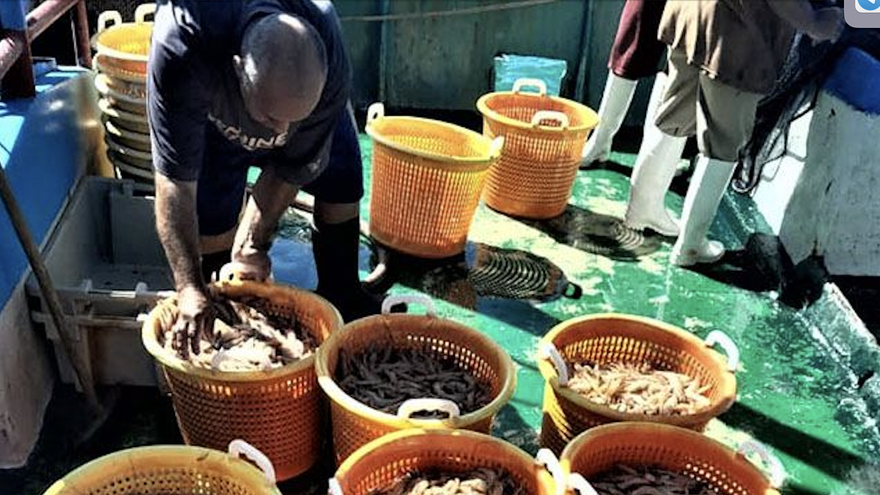
![]() 14ymedio, Havana, 1 July 2023 — It had been five years since the shrimp fleet of Ciego de Ávila – six heavy ferro-cement boats – did not meet the semi-annual goal of 94 tons of pink shrimp. However, nowhere in the long report in the local press about them this Saturday is it guaranteed that this food will arrive, even in minimal quantities, at the Cuban table. The goal is the same as always: export.
14ymedio, Havana, 1 July 2023 — It had been five years since the shrimp fleet of Ciego de Ávila – six heavy ferro-cement boats – did not meet the semi-annual goal of 94 tons of pink shrimp. However, nowhere in the long report in the local press about them this Saturday is it guaranteed that this food will arrive, even in minimal quantities, at the Cuban table. The goal is the same as always: export.
Local leaders admitted that the money to buy food for the entire state fishing sector depends on the success or failure of the fishermen and the subsequent sale of the product abroad. That the shipment was complete by the end of May is a good sign: it was still possible to work in June and make an additional profit.
The passage of Hurricane Irma in 2017 marked the beginning of bad luck for the shrimpers, who usually celebrate the fulfillment of the plan with a small party in the port of Júcaro. With timidity, the director of operations of the Industrial Fishing Company of the province, José López Calderón, said that the sale of cargo in the international market “favored” the consumption of seafood for the people for the rest of the year. However, the leader did not explain what part of the 94 exportable tons the people of Avila will receive.
Judging by Invasor’s report, the only fishermen who benefit from the work do so during working hours. A boat “goes on a cruise for 20 days, and a good part of the food expenses for the crew can be provided by the shrimp, and, to a lesser extent, by the aquaculture productions,” López explains.
As for the money from the sale of the shrimp, says the head of finance of the Fishing Company, Neyci López, it is destined – although not in its entirety – for “spare parts, repairs to the industry and paint for the boats.” But you can’t be “categorical” when it comes to calculating profits, he warns, since shrimp prices “float” on the world market.
Something remains, the leaders said, for the people. “We add about 28 tons each month; of them, 8.9 go for [people with prescribed] ’medical diets’, in addition to contributions to educational centers and Public Health.” It was not clear if they deduct that amount from the 94 tons planned for export or if it would come out of a surplus.
Among the factors that allowed the plan to be fulfilled this year, the authorities point out, is the repair of the boats, cabins and implements above the waterline of the ships. The most serious repairs, they say, have to be done in national shipyards, and this has not been possible.
Another negative factor has been the fuel crisis that affected the entire country and prevented greater movement of the boats. The profit, they say, could have been greater. However, they celebrate the triumph: “Júcaro reinvented itself,” is the slogan.
Invasor concludes its report with a voluntarist comment on the infinite possibilities that the sale of the precious shrimp will provide the Cuban State. However, it cannot avoid a bitter note: “We could not avoid the temptation, not at all culinary, to echo the popular voice when it inquires: what purpose do exports serve?”
Translated by Regina Anavy
____________
COLLABORATE WITH OUR WORK: The 14ymedio team is committed to practicing serious journalism that reflects Cuba’s reality in all its depth. Thank you for joining us on this long journey. We invite you to continue supporting us by becoming a member of 14ymedio now. Together we can continue transforming journalism in Cuba.
